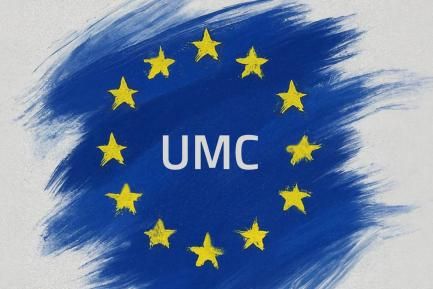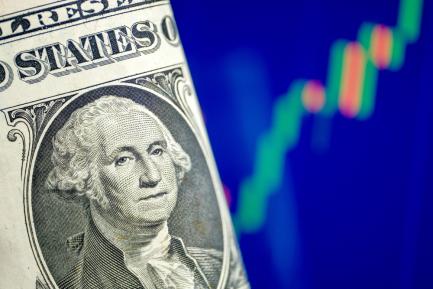On the need and effectiveness of the ECB's QE
Since the global financial crisis began in 2008, the central banks of the main developed countries have adopted extremely accommodative monetary policies. After cutting interest rates almost to zero, they resorted to unconventional monetary tools such as quantitative easing (QE) and forward guidance in order to relax credit and liquidity conditions even further. The European Central Bank (ECB), which has employed an extensive arsenal of unconventional tools to combat first the global financial crisis and then the sovereign debt crisis in the euro area, had so far resisted any large-scale purchases of public debt.1 However, on
22 January it announced it would expand its asset purchase programme to include sovereign bonds. What led the ECB to launch this programme? How effective will QE be in reviving the euro area's economy?
The ultimate goal of quantitative easing is no different from when a central bank cuts its official interest rate in that both actions aim to stimulate aggregate demand by reducing the interest rate paid by households and firms, encouraging them to consume and invest and thereby increase economic activity and inflation. The difference lies in how the impact of these measures is passed on to the real economy. While the aim is to reduce long-term interest rates by cutting short-term rates in the first case, the objective of QE is to have a direct effect on long-term interest rates. Specifically, when the central bank makes large-scale purchases of a certain kind of asset, its yield falls, encouraging investors to rebalance their portfolios with other assets that offer more attractive yields, so that this fall in interest rate is passed on to riskier assets.
That is the theory. In practice it is still premature to draw any conclusions regarding the effectiveness of public debt purchases by the ECB as the programme has only just begun. However, the numerous studies carried out on the US economy find that QE had a significant effect on the prices of financial assets and government, bank and corporate bonds, as well as on equity prices (see the article «QE comes to the euro area for a long visit» in this Dossier). Evidence is less conclusive, however, regarding the effect on the real economy but the overall belief is that successive rounds of QE prevented a deeper recession in the US. Nonetheless, the recovery has been a lot slower than expected. Although there are many different reasons for such sluggishness, one of factors limiting the speed of recovery in the US was the high level debt among households and companies which, as they had to extensively deleverage, did not respond to monetary stimuli as energetically as on other occasions. We can therefore assume that the deleveraging underway in the euro area, which has yet to be completed in several economies, will limit the effectiveness of the ECB's QE. This observation forms part of a broader debate regarding the limitations of monetary policy in terms of generating economic growth by stimulating aggregate and credit demand. In other words, the effectiveness of demand policies depends both on the willingness of private agents to increase their consumption and investment by enlarging their debt and also on the willingness of the banking sector to assume the risk (see the article «Banking in the face of QE: caught between wishes and reality» in this Dossier for an analysis of the role played by banks). Moreover, the lack of growth in the euro area is largely due to a problem of supply and not so much to demand. In this respect, in his appearances after the Governing Council meetings, Mario Draghi constantly warns that monetary policy measures must be accompanied by structural reforms that increase investment, stimulate job creation and boost productivity in euro area economies.
Although the effectiveness of the ECB's new programme is not guaranteed, to some extent the monetary authority has been forced to implement it due to the impact on the euro's exchange rate of extremely accommodative monetary policies employed by the rest of the developed world. According to economic theory, when a central bank cuts its official interest rate, the exchange rate tends to depreciate until the yields expected in different countries balance out. This impact on other economies is potentially greater in the case of quantitative easing given the significant amount of liquidity injected into banks and financial markets. In a globalised economy, capital flows move quickly to other economies and this can lead to sharp changes in exchange rates. Nonetheless central banks usually justify their decisions citing internal reasons; i.e. they take monetary measures mainly to influence domestic demand. Exchange rate effects are therefore considered to be an inevitable consequence of such policies rather than an end in themselves. However, it is true that the effects of monetary policy decisions are not merely limited to the economy adopting them but are felt beyond its borders, and they are not always welcomed by the country's trading partners. For example, some emerging economies such as Brazil and China, whose currencies appreciated considerably in 2010, accused the United States of starting a currency war. More recently the central bank of Japan has come under similar criticism. There is ample evidence for the benefits of coordinating policies at an international level in order to avoid situations that could increase volatility and even damage the credibility of the central bank itself, such as those that would result in a full-blown currency war. Nonetheless, it should be noted that the IMF (Spillover Report 2011) concludes that the effects of the United States' QE were positive globally as the improvement in the cyclical situation of the US economy and in global financial conditions had a positive effect on its trading partners which more than offset the negative effects caused by the dollar's depreciation.
Returning to Europe's case, between 2012 and March 2014 the euro appreciated by 9.9% in nominal effective terms. A strong euro does not only affect the region's competitiveness by making domestic exports more expensive; it also pushes down prices by making imports cheaper. As inflation in the euro area is at a very low level, the ECB has had no choice but to launch its own QE programme to promote price stability. In turn, the euro area's quantitative easing is pressurising other economies to adopt accommodative monetary policies as well if they want to stop their currencies from appreciating against the euro (see the article «The dilemma of Europe's central banks in the face of the ECB's policies» in this Dossier). One of the channels through which the ECB's QE could stimulate the economy is by depreciating the euro, boosting the export sector of some countries in the euro area.2
An analysis of the impact of the main monetary tools adopted by the Fed and the ECB on the nominal effective exchange rate of the dollar and euro, respectively, shows that these measures have tended to depreciate the domestic exchange rate, as predicted by the theory (see the previous graph)3 but with two notable exceptions: the first round of QE by the Fed and the outright monetary transactions (OMT) by the ECB. In both cases these actions represented a watershed in restoring confidence to their respective economies after significant shocks (the Lehman Brothers crash in the US and the sovereign debt crisis in the euro area). Although the monetary policy was accommodative, lower risk aversion pushed capital flows towards these economies, causing their currencies to appreciate.
Currency exchange movements as a consequence of monetary policy are therefore considerable. Once Mario Draghi started to explicitly state that the ECB would closely monitor the euro's exchange rate, in April 2014, the nominal effective exchange rate of the euro started a downward slide, falling by 4.8% between April and December. At the start of 2015 the euro depreciated even further due to the announcement of QE and the expectations of an interest rate hike by the Fed and the Bank of England. This depreciation will therefore be the main channel to boost the euro area's economy, reviving the exports of some countries on the one hand and pushing up import prices on the other. All this should help to achieve the ECB's objective of price stability.
Judit Montoriol-Garriga
Macroeconomics Unit, Strategic Planning and Research Department, CaixaBank
1. The ECB bought public debt under the Securities Market Programme (SMP) between May 2010 and September 2012 with the aim of improving the government bond market in those countries where high stress was preventing the effective transmission of monetary policy.
2. For a detailed analysis of the effect of the exchange rate on exports in the different countries of the euro area, see the Focus «The sensitivity of euro area exports to exchange rate movements» in the Monthly Report of December 2014.
3. The change in the exchange rate is shown between two months before and one month after the announcement of each measure, as well as the total impact estimated by Fratzscher et al. (2013 and 2014). These studies use daily data to isolate the impact of monetary policy from other contemporary effects that could influence the exchange rate, taking into account both the impact of the day of the announcement and the days of its implementation.




